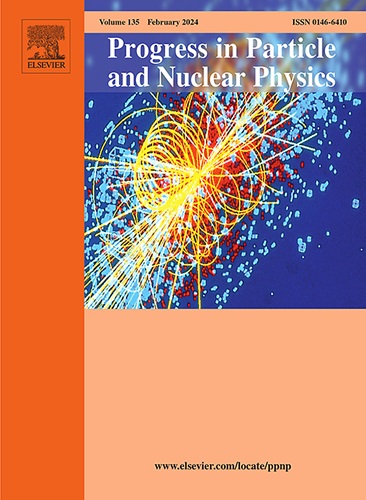Nuclear physics at BRIF
IF 17.9
2区 物理与天体物理
Q1 PHYSICS, NUCLEAR
引用次数: 0
Abstract
The Beijing Radioactive Ion-beam Facility (BRIF), based on the Isotope Separation On-Line (ISOL) technique, consists of a 100 MeV proton cyclotron as the driving accelerator, a two-stage ISOL system for ion separation, a 13-MV tandem accelerator for post-acceleration, a superconducting linac for further boosting beam energies. It is capable of providing ISOL beams in the energy range from 60 to 300 keV, and post-accelerated beams in the energy range from 3 to 10 MeV/u for nuclei with mass numbers of 80. For nuclei with up to 170, energies are still able to reach 3 MeV/u. This facility offers opportunities to address key questions of current interest in nuclear astrophysics, nuclear structure and reactions of unstable nuclei. In this review we present a comprehensive introduction to the BRIF and the typical experimental instruments installed on it, and then summarize current experimental results on unstable Na and Rb isotopes and future plan for development of the BRIF to improve its performance.
英国核物理研究所
基于同位素在线分离(ISOL)技术的北京放射性离子束设施(BRIF)由一个100 MeV质子回旋加速器作为驱动加速器、一个用于离子分离的两级ISOL系统、一个用于后加速的13 mv串联加速器和一个用于进一步提高束流能量的超导直线加速器组成。对于质量数为A<的原子核,能够产生能量为60 ~ 300kev的ISOL束流和能量为3 ~ 10mev /u的后加速束流;80. 对于A为170的原子核,能量仍能达到3mev /u。该设施提供了解决当前在核天体物理学、核结构和不稳定核反应方面感兴趣的关键问题的机会。本文综合介绍了BRIF及其典型的实验仪器,总结了目前BRIF在不稳定Na和Rb同位素上的实验结果,并对BRIF今后的发展进行了展望。
本文章由计算机程序翻译,如有差异,请以英文原文为准。
求助全文
约1分钟内获得全文
求助全文
来源期刊

Progress in Particle and Nuclear Physics
物理-物理:核物理
CiteScore
24.50
自引率
3.10%
发文量
41
审稿时长
72 days
期刊介绍:
Taking the format of four issues per year, the journal Progress in Particle and Nuclear Physics aims to discuss new developments in the field at a level suitable for the general nuclear and particle physicist and, in greater technical depth, to explore the most important advances in these areas. Most of the articles will be in one of the fields of nuclear physics, hadron physics, heavy ion physics, particle physics, as well as astrophysics and cosmology. A particular effort is made to treat topics of an interface type for which both particle and nuclear physics are important. Related topics such as detector physics, accelerator physics or the application of nuclear physics in the medical and archaeological fields will also be treated from time to time.
 求助内容:
求助内容: 应助结果提醒方式:
应助结果提醒方式:


